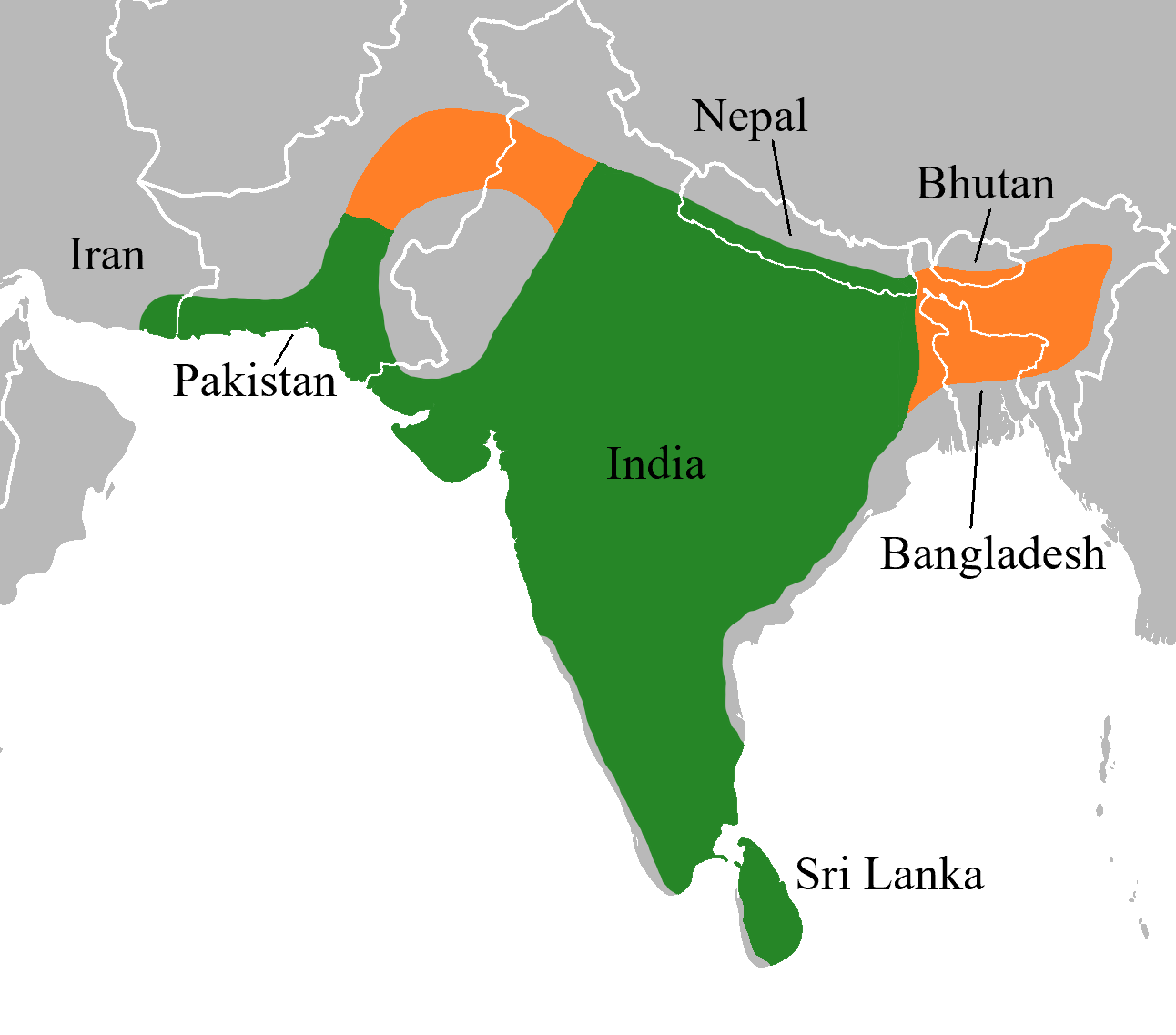Mugger Crocodile, Crocodylus palustris


Distribution (see below for detailed information)
Bangladesh (Extinct?), Bhutan (Extinct), India, Iran, Nepal, Pakistan, Sri Lanka
Red List Status
Vulnerable (VU)
Size
3-4 meters; maximum probably around 4.5 meters
Threats
Human-crocodile conflict; human population growth & expansion; habitat destruction; climate change
Notes on Human-Crocodile Conflict
The mugger crocodile is responsible for the third highest number of attacks on humans annually, behind only the Nile and saltwater crocodiles. In recent years, it is estimated that around 50-60 people have been killed annually, mostly in India. The highest numbers have been reported from the Indian states of Gujarat and Uttar Pradesh, where muggers are frequently found in areas of high human population density (including urban areas).
Detailed Distribution
Bangladesh
Historically present in many areas of freshwater habitat including the Padma, Yamuna, Meghna, Dharla, and Dhaleshwari rivers. It is currently considered extinct in Bangladesh, though individual crocodiles are increasingly being sighted and captured in various areas, including the Padma River (in Rajshahi), Nagri River (in Rangpur), and even a non-fatal attack in Mansurabad of Faridpur. These crocodiles are likely wandering in from West Bengal, India, since crocodiles are also being increasingly recorded in areas of that state where it was previously extinct (e.g., Hooghly River). There is also a small, semi-wild group of muggers in the lagoon at the Khan Jahan Ali shrine in Bagerhat, Khulna Division.
Bhutan
Reportedly extinct by the mid-20th Century but was historically recorded from several rivers including the Bado, Manas, Puna Tsangchu, Raidak, and Sunkosh Torsa rivers (Whitaker and Andrews 2003).
India
Widely distributed and present in at least 16 states- Andhra Pradesh, Bihar, Chhattisgarh, Goa, Gujarat, Karnataka, Kerala, Madhya Pradesh, Maharashtra, Odisha, Rajasthan, Tamil Nadu, Telangana, Uttar Pradesh, Uttarakhand, and West Bengal. Important areas include most of the Chambal River (where the species is sympatric with the gharial [Gavialis gangeticus]), Gandak River, Harha River, Narmada River, Krishna River, Kali River, Cauvery River, and many dams and lakes such as Lake Powai in Mumbai and Ghodahada Dam in Odisha. The species is extinct along the Brahmaputra and Barak rivers in Assam and Manipur states, as well as in Punjab. Attacks are very common in India, with at least 35 people being attacked (13 fatally) in Uttar Pradesh and 15 people (11 fatally) in Gujarat in 2023 alone. The Vishwamitri River in Vadodara City and waterways around Katarniaghat Wildlife Sanctuary are major hotspots.
Iran
Present only within the southeastern portion of the country in Sistan and Baluchestan Province, specifically the Sarbaz River, Pishin Dam, and adjacent areas. Between 2012 and 2021 there were reports of 8 attacks on humans in Iran, resulting in only one death.
Nepal
Found in the country's southern lowlands including Chitwan National Park (particularly the Rapti River), Koshi Tappu Wildlife Reserve, Ghodaghodi Lake in Seti, and the Gandak River. Over the past decade 20 attacks were reported in Nepal, resulting in 6 deaths.
Pakistan
Historically found throughout much of the Indus basin, probably as far inland as India's Punjab State. Today the species is restricted to locations in Sindh Province including the Deh Akro II wetland complex, Nara Canal, Chotiari Reservoir, and Haleji Lake. Attacks on humans do not appear to be particularly common, though fatalities were reported in 2014, 2020, and 2021.
Sri Lanka
Widely distributed throughout much of the island excluding the western and southwestern coastal regions, which are dominated by the saltwater crocodile (Crocodylus porosus). Interestingly, the two species appear co-exist in Batticaloa Lagoon along the eastern coast. Important mugger locations include Yala National Park, Wilpattu National Park, Bundala National Park, and Udawalawe National Park. Muggers are also found in many of the island's man-made reservoirs, known locally as "tanks". The species is even found on Mannar Island in the far northwest near Tamil Nadu, India. Sri Lanka is second only to India in terms of mugger attacks on humans. Over the past decade there were reports of 54 attacks resulting in 37 deaths where the mugger was the confirmed or most likely culprit, though it is likely that some incidents went unreported.
